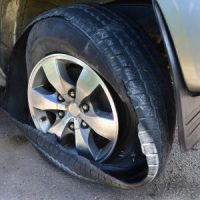Underinflated Tires Can Cause Blowouts

With temperatures dropping now that autumn is officially upon us, Florida drivers should be sure to check that their tires are properly inflated. While motorists may know that driving on underinflated tires can affect gas mileage, many don’t know how much it increases the chances of a blowout. Tire blowouts, in turn, can have severe consequences, especially in states like Florida, where road conditions and the weather can worsen tire wear over time.
Reduced Vehicle Control
One of the biggest risks of driving with underinflated tires is reduced control of the vehicle. The shape of a car’s tire affects its performance, so low air pressure can result in less acceleration, can make it hard to steer, and can significantly reduce braking efficiency. Tires with low pressure also flex a lot more than they should, which can result in a further lack of responsiveness and handling, both of which compromise a driver’s ability to brake and steer and make it a lore more likely that a driver will cause, or be unable to avoid, a collision.
Increased Risk of Blowouts
There’s always a chance that a vehicle’s tires could blow out as a result of a defect, wear and tear, or extremely high road temperatures. Underinflation, however, can also significantly increase a tire’s chances of failing. This is due to the fact tires become flatter (due to a lack of air) when coming into contact with the surface of the road, which increases the internal heat and rolling resistance and eventually causes wear and tear on the edges of the tire. This kind of increased friction can cause tread separation and blowouts.
Signs of Underinflation
There are a few different ways to tell if a vehicle’s tires are under inflated, one of which is visual inspection. Drivers should keep an eye out for tires that look flatter along the surface when in contact with the road, for uneven tread wear, and for bulges, cracks, and bubbles in the tire’s sidewalls. Many vehicles are also equipped with Tire Pressure Monitoring Systems that use sensors to measure pressure and alert drivers when it is too low. Drivers can also look for changes in vehicle handling, like sluggish tire response, lower fuel economy, and problems with steering. Vehicles with underinflated tires feel less responsive, particularly when braking or turning a corner. Finally, drivers should be sure to conduct regular pressure checks, especially when the temperature is fluctuating. The proper pressure for a certain model can be found on the driver’s door jamb or in the manual.
Reach Out to the Legal Team at Boone & Davis Today
Not all car accidents are the result of driver error, but could be caused by something as simple as a blowout resulting from underinflated tires. If you were hurt in an accident because of another driver’s improper tire maintenance, call 954-566-9919 and speak with our experienced Fort Lauderdale car accident lawyers about your legal options. You can also schedule a meeting by sending an online message.
Sources:
nhtsa.gov/vehicle-safety/tires
afdc.energy.gov/laws/6495
